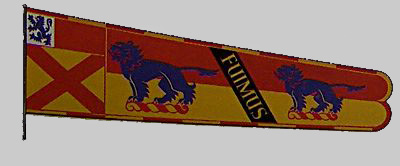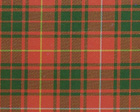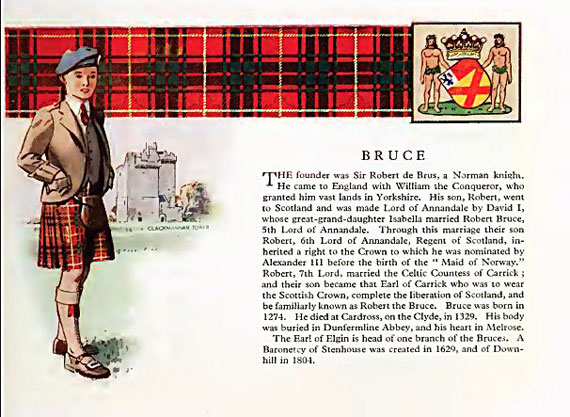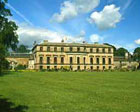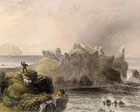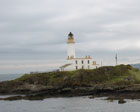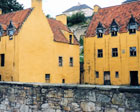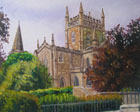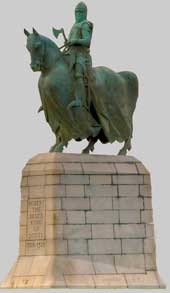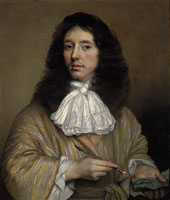- Clan Name: Bruce - septs - Carlyle, Carruthers, Crosbie, Randolph, Stenhouse.
- Clan Motto: Fuimus - We have been
- Clan Chief: Andrew Douglas Alexander Thomas Bruce, 11th Earl of Elgin and 15th Earl of Kincardine
- Clan Seat: Broomhall House, Charlestown, Fife, Scotland
- Clan Lands: Annandale, Kincardine.
- Clan Tartan :
- Clan links :
- Clan links :
Clan History
The name of Robert de Brus has Norman origins coming over to England in the 1066 invasion, his son also Robert accompanied David 1st to Scotland. For his services he
was granted lands at Annandale.
Clan Bruce is a clan originating in Kincardine in Scotland and was not
only a
Clan and popular family, but also a Royal House and in the
fourteenth century
managed to produce two of the greatest kings of Scotland.
Robert the 4th Lord of Annandale had married the niece of William the Lionhearted
putting his off-springs in the bloodlines of Royal Lineage.
Robert, the seventh Lord Annandale, second Earl of Carrick, was born in 1274.
The throne fell
vacant in 1290 and in 1305 Robert Bruce declared himself King of
Scotland
and
was crowned at Scone. His claim to fame being the
victory over
the
English at Bannockburn in 1314 which stopped dead
the
English designs on Scotland.
After Bruce cleaned the remaining English out of Scotland he twice invaded England, and in 1323 signed a 13 year truce with King Edward II of England. Four years later Edward the third ascended the English throne and once more cast greedy eyes on Scotland. Truces were broken, England invaded and was soundly beaten again. Bruce took the war into England invading Northumberland.
The Treaty of Northampton was signed in Edinburgh March 17th
1328 and confirmed in a parliament held in Northampton. The treaty was drawn
up recognising the complete Independence of Scotland. One of the clauses
being the future marraige of Prince David only son of Robert to Princess Joanna
the King of England's sister.
This marraige took place in Berwick on the 12th July 1328
even though the
Prince was only 5 years of age and the princess was 7.
The Bruce saw them
on their return to Edinburgh and he died the next year in 1329 at the age of 55 having achieved his aims. Before passing on he extracted a promise from his friend, Sir James Douglas, he wanted his heart carried on a crusade to the Holy Land. This was a condition he was to have paid the Pope for absolution. His embalmed heart was carried on crusade and when returned was buried at Melrose Abbey. His body was
buried at Dunfermline Abbey.
Peace at last between the two countries was cemented but was only to last
for four years when Edward King of England once again took up the aims
of his father and grandfather and tried to conquer Scotland.
David II, (1324-1371) King Robert's only son, passed away leaving no heir and
the Royal
Line
was taken up by the descendants of Lady Marjory Bruce,
King Robert the Bruce's daughter. Thus started the Stewart line with King Robert the 2nd who ruled from 1371 to 1390.
Clan Bruce has been linked to many castles, some of which are well known,
some not so. Among them, however, people will no doubt notice that a few
of them have been linked to various other Clans throughout Scottish history.
Among the castles that Clan Bruce has owned or has been linked to are
Fyvie Castle, Airth Castle, Thomaston Castle, Culross Palace, Clackmannan Tower, Fingask Castle, Kinross Castle, Lochleven Castle and
Turnberry Castle.
Turnberry Castle, laterally known for the golf course in the area, has no real
authentic records to confirm its origins. It is however, filled with both history
and legend, and was thought to be the birth place of Robert the Bruce.
According to popular belief, Marjorie of Carrick, a widow who owned the
castle, had a knight that used to visit her until such a time that she decided
to hold this knight captive until he agreed to marry her and produce a child.
That child was Robert of Bruce and that is how the Clan Bruce was believed
to have originated. This child later become the King of Scotland and lived in
the castle for many years until it was seized by the English, only later to be
retrieved by Robert the Bruce in 1307. Just three years after this, he ordered
the castle destroyed to make sure it never fell into English hands again and unfortunately, it was never rebuilt.
Kinross House, another castle that was linked to the Clan, was originally constructed
in 1686 by Sir William Bruce and this castle overlooks Loch Leven near Kinross. This castle can still be visited today and was very well maintained during the ages, only needing the occasional piece of renovation.
Culross Palace was also linked to Clan Bruce and this one dates its links back to
the Clan from the late sixteenth century. Situated in Culross in Fife, it was
originally built between 1597 and 1611 by Sir George Bruce. Again, this is another
castle that has stuck with the Clan and it is now owned and maintained by the
National Trust for Scotland and can be visited all year round.
These are just three of the castles from the extensive history of Clan Bruce. They were considered to be a very important family within Scottish history and their long castle list reflects this very well.
